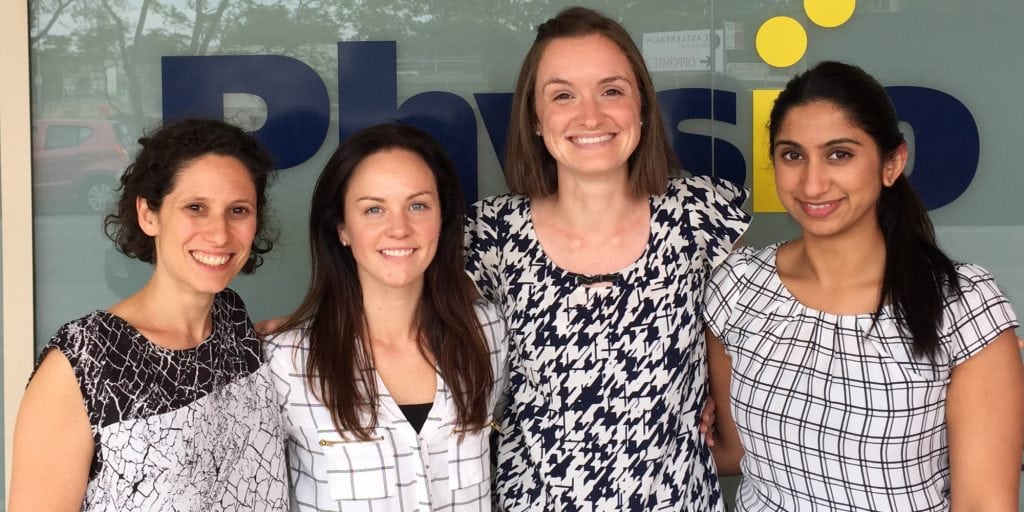
What is Abdominal muscle separation?
Abdominal muscle separation is a common term used to describe rectus abdominis diastasis (RAD). RAD is a common condition that occurs during pregnancy. The right and left rectus abdominis muscles, also known as the ‘6 pack muscles,’ are connected by a fascial tissue called the linea alba. The linea alba softens and stretches during pregnancy to allow for growth of the baby. The stretching of the linea alba is what constitutes RAD. Health professionals will measure the distance between your right and left rectus abdominis muscles to assess the amount of the separation.
Where does RAD occur?
The separation of the linea alba can occur anywhere from the base of the sternum, also known as the breast bone, to the top of the pubic symphysis, also known as the pubic bone. Most commonly the largest site of separation is at or around the belly button.
What risk factors do I have making me susceptible to having a large RAD?
Genetics is a risk factor that may predispose some women to large RAD. Individuals with less type 1 and 3 collagen fibres are more at risk of getting RAD.
What is collagen type 1 and 3?
Collagen type 1 fibres resist stretch. During pregnancy, they work to resist stretch of the linea alba preventing a large RAD.
Collage type 3 fibres are the fibres that allow recoil of stretched tissue. In the post partum period, recoil of the linea alba is easier in those with a higher collagen type 3 count.
Does the size of my RAD really matter?
There are new studies looking into whether the size of the RAD is of importance. There are some health professionals who are looking at linea alba tension and control rather than the distance between the rectus abdominis muscles. There is more research to be done on this, however it is why it is important to seek advice from a Women’s Health Physiotherapist so you can receive an individualised assessment if you are concerned about your abdominal muscles.
If I have RAD will I also get back pain and/or pelvic pain?
With the current research we have, back pain and distance between the abdominal muscles does not seem to be associated in the early post partum period. There is some evidence to suggest that severity of back pain can increase with existing large abdominal separation.
What is the current recommended treatment for RAD in the early post partum period (6-8 weeks post partum)?
There is limited research to guide health professionals on how to best treat rectus abdominis diastasis. There are some small studies as well as professional opinions that give us some guidance.
For the first 6-8 weeks post partum the abdominal wall is recovering and recoil is occurring at the linea alba. To assist with recoil of the linea alba it is recommended you do the following in the first 6-8 weeks:
- Wear a supportive post partum recovery belt (wear for approx. 8 hours a day)
- Commence gentle pelvic tilt exercises – gently tilt your pelvis when sitting, standing or lying like a reverse crunch
- Avoid straining on the toilet
- Bed mobility – use log roll technique to get out of bed
- Take regular rests lying on your back
What is the current recommended treatment for RAD after 8 weeks post partum?
After 6-8 weeks of natural healing and using the above guidelines it is a good time to commence guided abdominal exercises. Exercises that encourage you to use your pelvic floor muscles and deep and superficial abdominal muscles are helpful in improving RAD and abdominal wall tone and function. You can seek specific individualised exercises from a physiotherapist with an interest in women’s health. To see one of our physiotherapists who can help you with this, please contact one of our clinics:
Westmead: 02 9633 1035
Blacktown: 02 9672 3511
Penrith: 02 4721 5788
Bella Vista: 02 8814 5551









